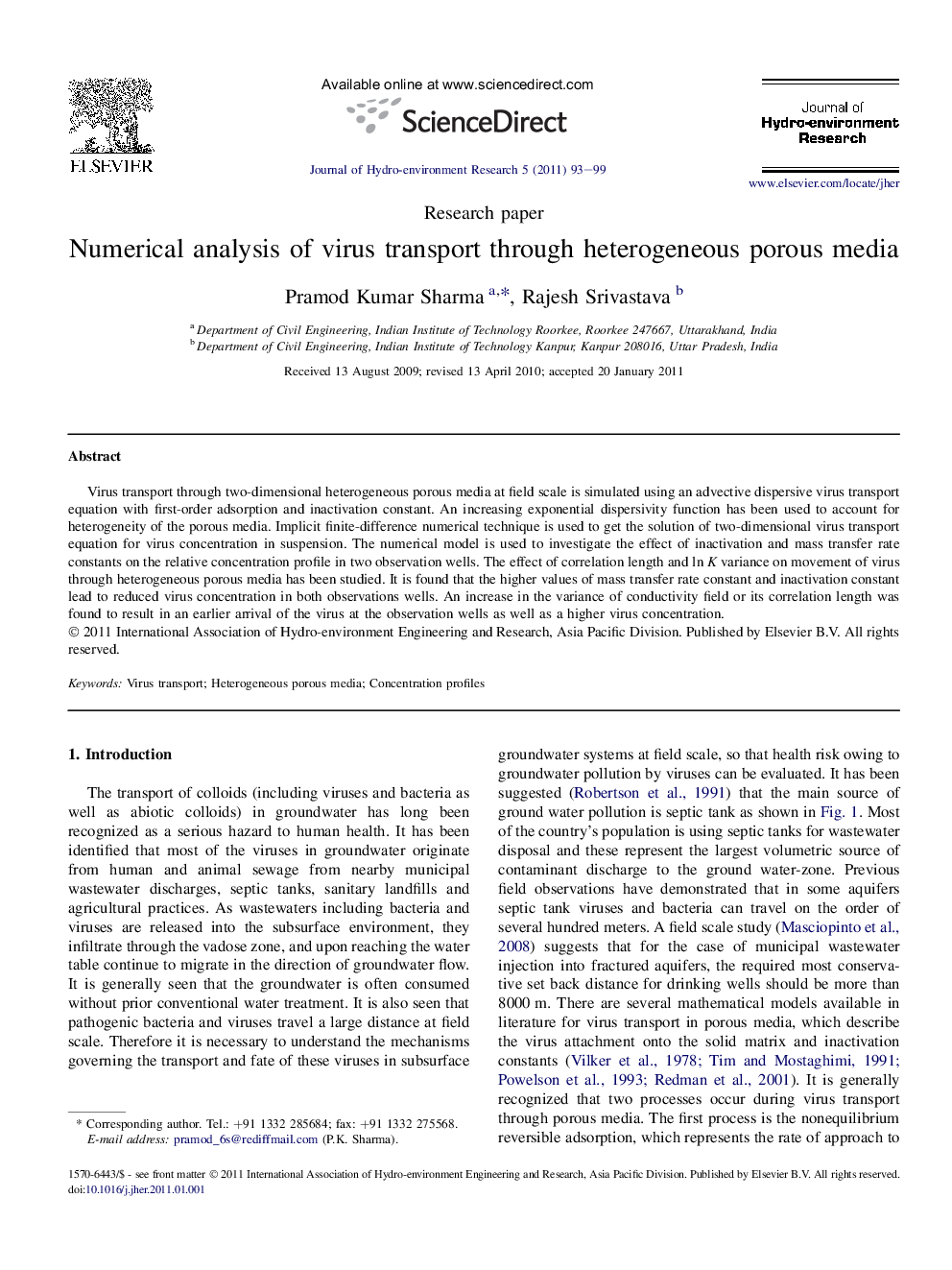| Article ID | Journal | Published Year | Pages | File Type |
|---|---|---|---|---|
| 4493904 | Journal of Hydro-environment Research | 2011 | 7 Pages |
Virus transport through two-dimensional heterogeneous porous media at field scale is simulated using an advective dispersive virus transport equation with first-order adsorption and inactivation constant. An increasing exponential dispersivity function has been used to account for heterogeneity of the porous media. Implicit finite-difference numerical technique is used to get the solution of two-dimensional virus transport equation for virus concentration in suspension. The numerical model is used to investigate the effect of inactivation and mass transfer rate constants on the relative concentration profile in two observation wells. The effect of correlation length and ln K variance on movement of virus through heterogeneous porous media has been studied. It is found that the higher values of mass transfer rate constant and inactivation constant lead to reduced virus concentration in both observations wells. An increase in the variance of conductivity field or its correlation length was found to result in an earlier arrival of the virus at the observation wells as well as a higher virus concentration.
► Exponential dispersivity function to account for aquifer heterogeneity. ► Effect of inactivation and mass transfer rate constants on breakthrough curve. ► Effect of correlation length and variance of the conductivity field on virus transport.
